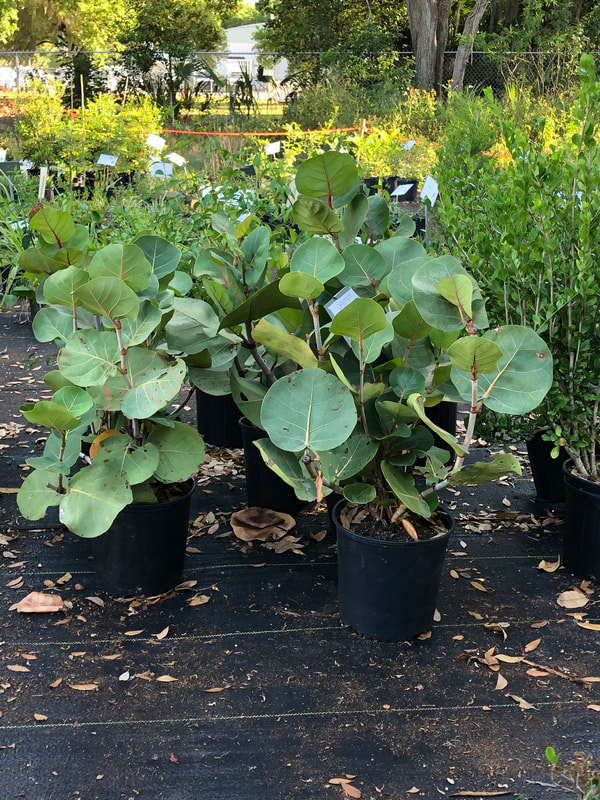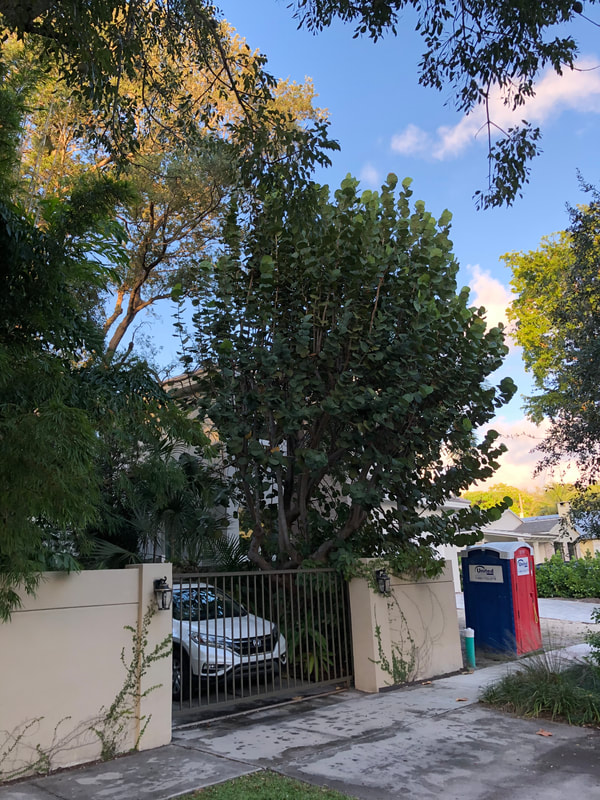Seagrape (Coccoloba uvifera)
Full to Part Sun
Low Water Needs
Size: 10-15 ft tall x 3-35 ft wide
Bloom Time: Spring to Summer
If you have ever been to a coastal town, you have seen the seagrape. This hearty shrub works well as a specimen plant or as a large privacy hedge. It’s large, thick, round leaves make it stand out from most other plants in the landscape. The leaves have red veining, new growth has a bronzy-red tint, and some leaves will turn completely red in winter before they fall off. It is fast growing and it tends to sprawl. If planted inland if may die to the ground with a hard freeze, but it will sprout back from the roots. It is attractive to pollinators, and wildlife will consume the fruit.
Consideration: The leaves take a long time to decompose, so plant where leaf litter is not a problem.
Fun facts: The fruits are edible with sweet-sour flavor sometimes used to make jams and jellies. It is possible to make wine from the fruits. Also, the resin of the bark has been used in tanning and dying.
http://florida.plantatlas.usf.edu/Plant.aspx?id=3791
Low Water Needs
Size: 10-15 ft tall x 3-35 ft wide
Bloom Time: Spring to Summer
If you have ever been to a coastal town, you have seen the seagrape. This hearty shrub works well as a specimen plant or as a large privacy hedge. It’s large, thick, round leaves make it stand out from most other plants in the landscape. The leaves have red veining, new growth has a bronzy-red tint, and some leaves will turn completely red in winter before they fall off. It is fast growing and it tends to sprawl. If planted inland if may die to the ground with a hard freeze, but it will sprout back from the roots. It is attractive to pollinators, and wildlife will consume the fruit.
Consideration: The leaves take a long time to decompose, so plant where leaf litter is not a problem.
Fun facts: The fruits are edible with sweet-sour flavor sometimes used to make jams and jellies. It is possible to make wine from the fruits. Also, the resin of the bark has been used in tanning and dying.
http://florida.plantatlas.usf.edu/Plant.aspx?id=3791





